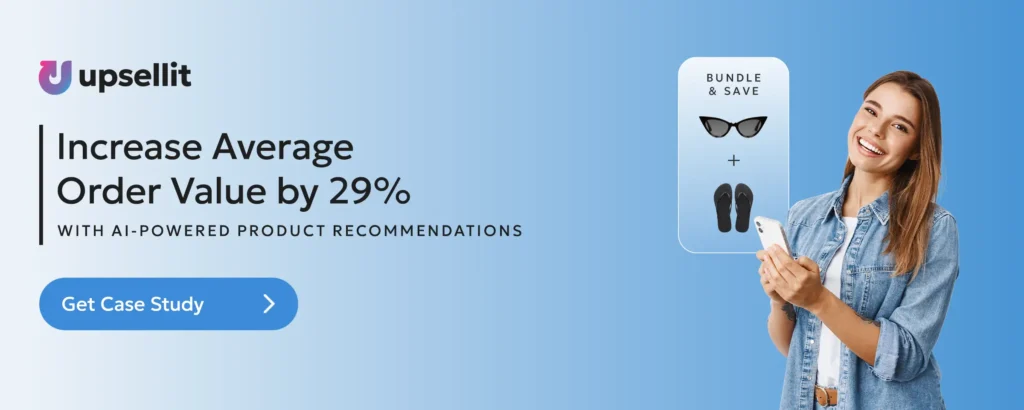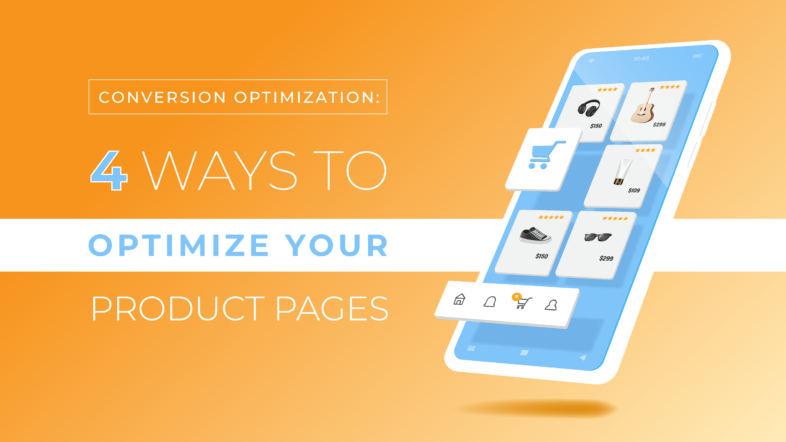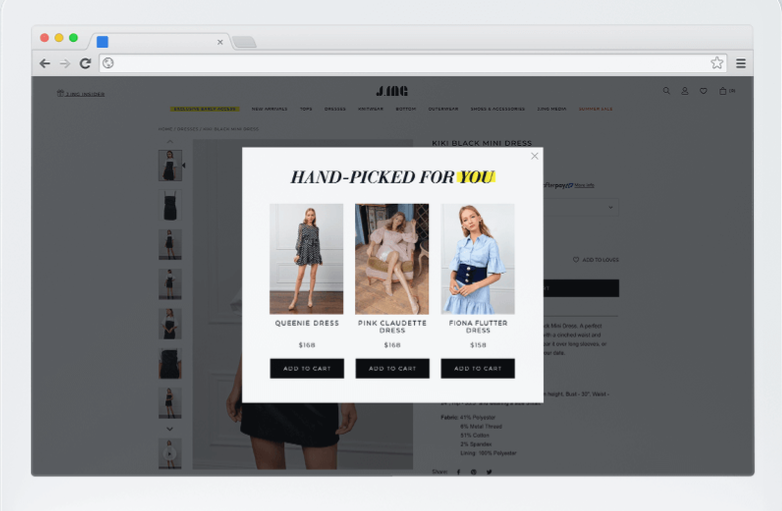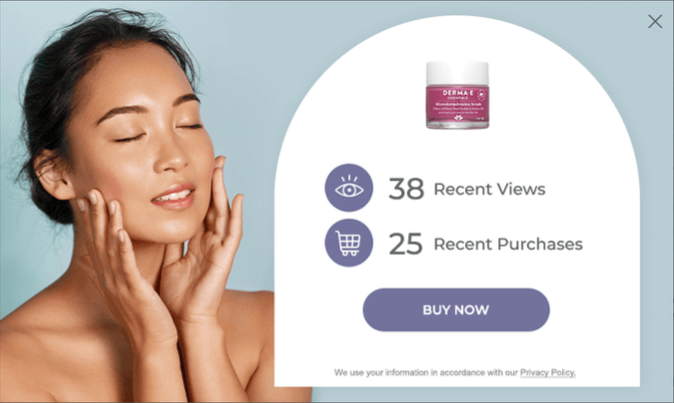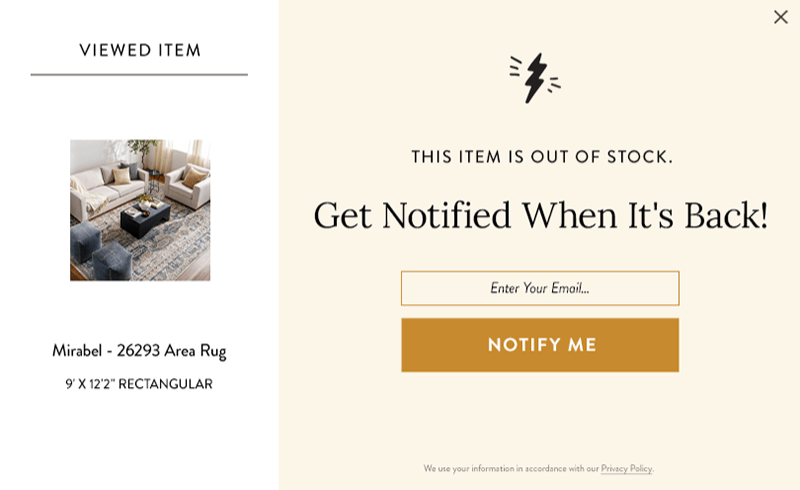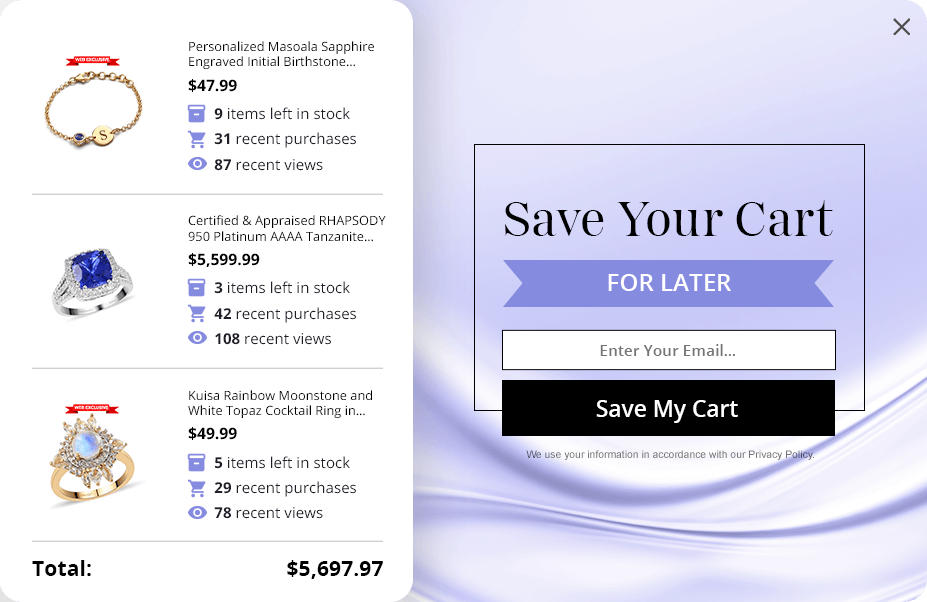Every stage of a website maintains a different role for a reason. To properly optimize your entire website, you need to have specific strategies for each stage of the funnel to maximize sales and engage website visitors. Product pages are specifically important because they’re a deep dive into your brand identity and what you can provide for consumers.
Why You Should Optimize Your Product Pages
There are more than 24 million eCommerce websites worldwide, meaning you need your website strategies to be fully optimized to stand out. Once your product pages are optimized, you’ll encounter fewer returns and increased customer satisfaction. You’ll also increase your average order value because your products will be more accessible, enticing, and easier to navigate.
4 Ways to Optimize your Product Page
Take a look at the four ways to optimize your ecommerce product pages for increased conversions, AOV, and customer lifetime value.
1. Be as Detailed as Possible
Details go a long way with online shopping because people can’t experience your products in person. With so many products out there, consumers need all the important information they can get before deciding on a specific product.
Highlight the Value and Features
When it comes to product details, you need to explain the benefits of your products in an engaging way, rather than just describing their features. Tell users why they need your product. Don’t leave too much room for them to make their own impressions. This is your chance to convince shoppers why your products are perfect for them.
These product descriptions can also be broken down into bullet points so people can scan details easily. You don’t want it to feel like a chore to learn about your products. People have short attention spans, so you need to cater to them.
Showcase the Product
When considering product page design, your items need to look sharp and appealing if you want people to make a purchase. When creating your product pages, use high-quality product images that don’t slow down your site, and allow users to zoom in.
For popular or more complex products, upload videos to give users a clear representation of what your product is all about. Be sure to include clear CTAs with contrasting colors so your add to cart button stands out.
Share Other Relevant Details
While you need to be cognizant of including too much overwhelming information, you still need to provide all the details users need to make a decision. If you’re a clothing retailer, include a size guide that also includes the size the model is wearing in the photo.
Provide measurements for each size so there are no surprises when the clothing arrives. If you’re selling products that come in a variety of dimensions, provide detailed measurements with size comparisons.
2. Provide Personalized Recommendations
Successful ecommerce brands focus on personalization, and AI Recommendations are an excellent strategy to cater to specific shoppers’ needs.
Behavioral parsing utilizes AI to look at page views, time on site, wish lists, and cursor movements to decide what items are best for specific shoppers. These real-time recommendations create a personal shopping experience for your visitors, therefore increasing AOV and sales by helping shoppers get what they need.
Seamless In-Page Recommendations
In-page product recommendations are a classic strategy to provide help without distracting from the user experience. Recommendations should be as seamless as possible, unless a user is truly about to abandon your website. You want to keep the experience fluid until the shopper needs a nudge.
Position in-page recommendations below specific product detail pages (PDPs) to suggest additional items while letting shoppers browse on their own. This is especially useful if your online store offers a wide range of items that are still similar in description or style.
You can also use these recommendations to upsell. Fashion brands can suggest items that “complete the look” to help build outfits. Electronics brands can suggest accessories like adding a wireless keyboard to a monitor.
Recommendations on Abandonment
Recommendations on abandonment are a great strategy to stop site abandonment and keep shoppers on the path to conversion. If a user tries to leave, but they’re met with a relevant product they missed, there’s a good chance they’ll give you another shot.
If your ecommerce store has existing offers such as free shipping, you can leverage this messaging alongside the recommendations to further incentivize shoppers to stay on-site.
Recommendations for Out-of-Stock Items
Out-of-stock doesn’t need to mean lost revenue. Alternative recommendations for stockouts are a great solution to show users similar items that satisfy the same need. Once potential customers have their mind on something, they often don’t want to wait. To provide instant gratification, offer a similar product that’s available immediately to recover otherwise lost sales.
3. Build Trust With Shoppers
Trust is crucial in today’s world of online shopping. Customer loyalty doesn’t exist without trust, and it should be a core focus in your branding initiatives. Here’s how you achieve it.
Promote Customer Reviews
58% of shoppers have abandoned their shopping cart due to the absence of user reviews and pictures. Customer reviews are essential in brand trust, because every brand is trying to convince you they’re the best. Getting outsider opinions on a business gives shoppers the green light that you’re speaking the truth about your products.
Promote your customer reviews on your product pages, and allow customers to upload photos to give even more reassurance that your products provide value.
Leverage Social Proof
Additional social proof can be leveraged alongside customer reviews. AI-driven solutions can dynamically show recent views and recent purchases to your website visitors either in-page or on abandonment to create urgency to make a purchase.
This is especially effective with low stock alerts. Let your customers know there are only a few items left when your stock levels run low so they can grab their favorite items while available.
4. Help Hesitant Shoppers and Collect New-to-File Leads
If your visitors are still not ready to make an immediate purchase, that doesn’t mean you’ve lost the sale. Whether the hesitation is from inventory concerns or low purchase intent, leverage these strategies to collect new leads, heighten the user experience, and recover lost sales.
Leverage Out of Stock Inventory
For some brands, alternative recommendations aren’t an option due to the product type. When your low stock alerts finally hit zero, help shoppers get their item when it’s back.
Offer to send users an email when their item is back in stock so they don’t forget about their desired product. This way, you can bring users back into the funnel and recover that otherwise lost sale while collecting leads for future email marketing campaigns.
Save Shoppers’ Carts
Cart preservers act as a personalized wish list that you can send directly to potential customers. Offer to save carts on abandonment so you can email shoppers their cart items.
You can even add small incentives to the emails to regain their attention and encourage purchases. Send a sequence of three emails, and by the third, remind users their cart is about to expire to create urgency and obtain the sale.
Offer Price Drop Alerts
Price drop alerts are a great strategy for the price-conscious and comparison shoppers. Many site visitors shop on a budget, so they’ll be hooked on getting the best deal possible. If your product prices fluctuate often, offer price drop alerts in exchange for an email so users can complete their purchase when the price is right.
Work with Technology Partners
Implementing new AI-driven strategies may feel like a large task, but Upsellit makes it easy. As a leading conversion optimization partner, we work through your affiliate program to create personalized, data-driven strategies for your brand without any heavy lifting on your end. Our in-house team of engineers, designers, and strategists can quickly implement one-to-one solutions that increase conversions 5 to 15% without disrupting your current efforts in place.
Increase Sales with AI Recommendations
Ready to level up your product pages? Get our AI Recommendations case study to see how our data-driven recommendations can elevate product page strategies for your brand.
